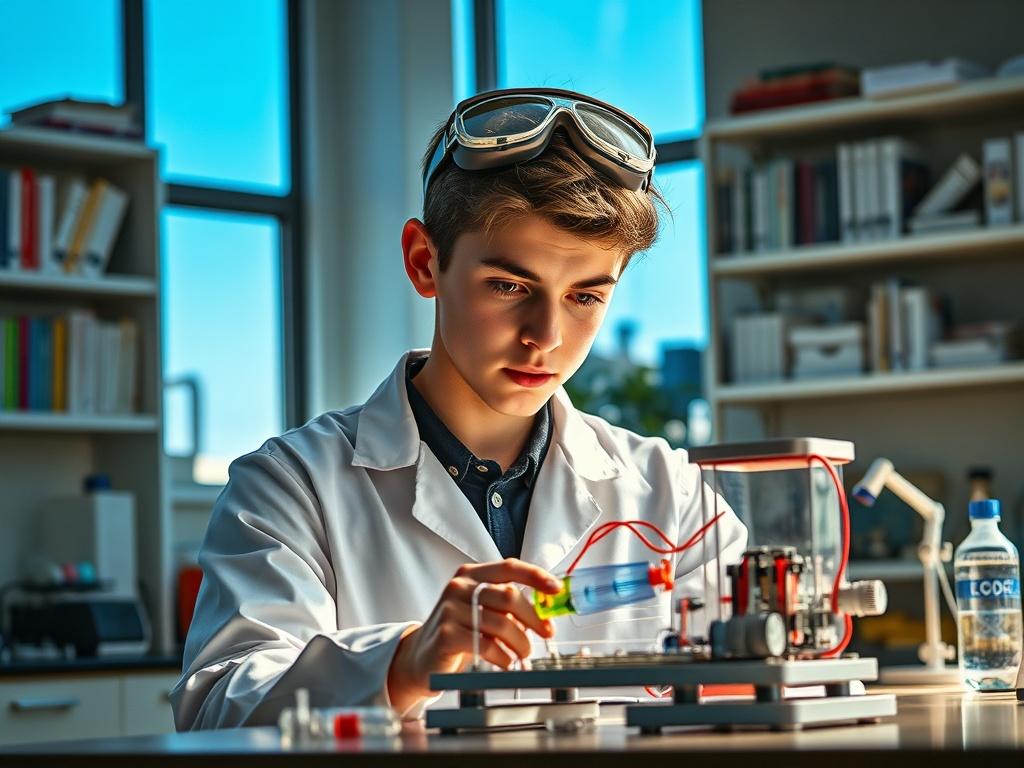
Designing microgravity experiments opens a fascinating window into the complexities of space science and innovation. As students dive into this unique realm, they engage with the principles of microgravity, exploring how the absence of gravitational forces affects various physical phenomena. This growing interest not only fuels curiosity but also lays the groundwork for future scientific breakthroughs. Whether it's investigating fluid dynamics or evaluating biological responses, understanding how to craft effective experiments in microgravity is essential for aspiring scientists and engineers.
In this blog post, we will guide you through the journey of designing experiments for space. You will learn how students design experiments for space, following a structured step-by-step process that transforms theoretical concepts into practical applications. We'll also delve into real-world examples to highlight how these microgravity experiments contribute to significant discoveries and advancements in technology. Join us as we uncover the exciting world of microgravity and the role future generations will play in shaping our understanding of the universe.
Understanding the principles of microgravity: A guide for aspiring experiment designers
Microgravity presents a unique environment that allows researchers to explore phenomena that are otherwise difficult or impossible to study on Earth. In this near-weightless state, the effects of gravity are minimized, enabling scientists to observe how materials, biological systems, and physical processes behave in ways that can lead to groundbreaking discoveries. To understand the principles of microgravity, aspiring experiment designers must first grasp the fundamental laws of physics and how they differ in a space environment. Concepts such as buoyancy, convection, and surface tension become critical in microgravity, often leading to unexpected results that can reshape our understanding of various scientific fields.
By learning the principles behind microgravity, students can better formulate their experiment ideas and design methodologies. It is essential for them to consider how the absence of gravitational pull will influence their experiments, from fluid dynamics to crystal growth. Students can leverage this knowledge to create innovative experiments that not only address scientific questions but also expand the horizons of human understanding. Mastering the principles of microgravity is not just about theoretical knowledge; it empowers aspiring experiment designers to think critically about the unique challenges and opportunities that space research presents.
Step-by-step process: Learn how students design experiments for space
Designing microgravity experiments requires a structured approach that students can follow to ensure their ideas are both innovative and feasible. The process begins with identifying a scientific question or problem that can be explored in a microgravity environment. Students brainstorm potential hypotheses and research the existing literature to understand what has already been studied. This foundational knowledge helps them frame their experiments in a way that fills gaps in current research. Once they establish their research question, they move on to designing the experiment itself, considering factors such as materials, methods, and safety protocols.
Next, students create a detailed experimental plan that outlines the equipment and methodologies they will use. They often leverage simulations or scale models to visualize how their experiments will function in microgravity, honing their designs based on preliminary results. Collaboration is crucial at this stage; students frequently work in teams, sharing ideas and feedback to enhance the experimental design. Finally, they prepare for the unique challenges of conducting an experiment in space, such as developing strategies for data collection and analysis in a weightless environment. By following this systematic approach, students gain hands-on experience in scientific inquiry and are better equipped to contribute to the exciting field of space research.
Real-world applications: How microgravity experiments shape future discoveries
Microgravity experiments have become pivotal in addressing some of the most pressing challenges in science and technology. Researchers utilize the unique environment of space to study fundamental phenomena that often behave differently under reduced gravity. For instance, scientists examine fluid dynamics to create more efficient models for water transportation on Earth and in future spacecraft. These experiments foster advancements in material science, leading to the development of stronger alloys and innovative composites used in various industries. By conducting experiments in microgravity, students not only gain hands-on experience but also contribute to discoveries that can impact everyday life on our home planet.
Moreover, microgravity research plays a crucial role in the medical field, particularly in drug development and understanding disease mechanisms. In the absence of gravity, cells and proteins behave differently, allowing researchers to identify potential treatment strategies and improve medical therapies. Students engaged in designing such experiments explore cutting-edge applications like tissue engineering and regenerative medicine. By investigating how biological systems adapt and respond in space, they aid in developing new solutions to combat diseases here on Earth. The continuous push for knowledge through microgravity research sets the stage for breakthroughs that can change lives and expand our understanding of the universe.